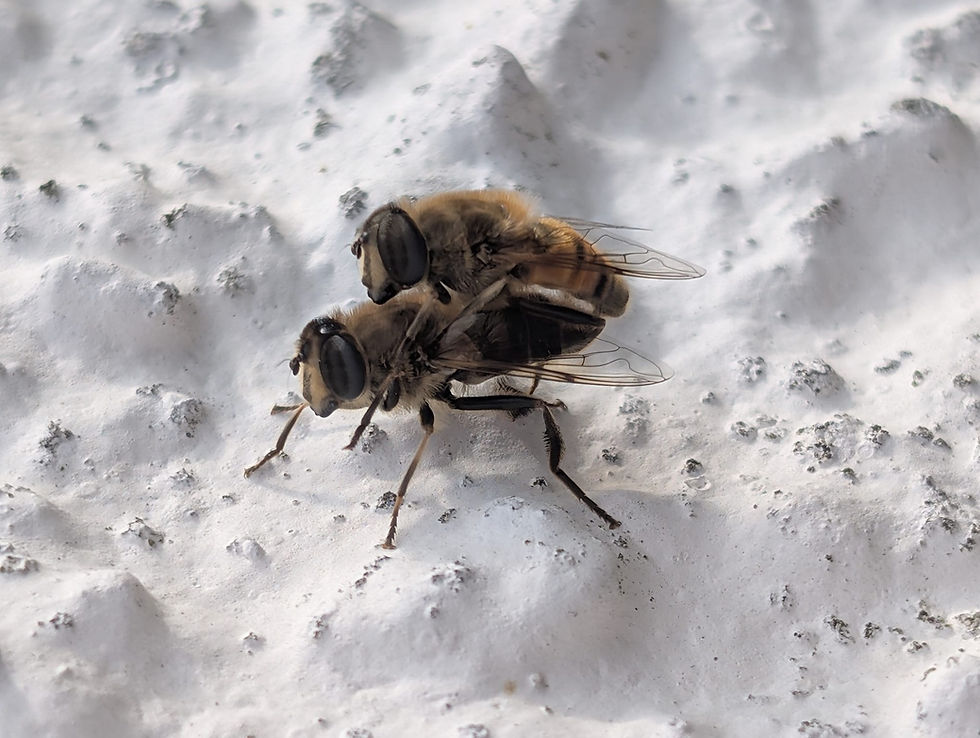Meaningful Co-incidences?
- @F_i_l_i

- Aug 16, 2019
- 4 min read
Updated: Jul 25
'God, that is Nature superior, interrupted this dispute; for she separated the land from the sky and the waves from the land and split the blue sky from the misty air. And having rolled them out and extracted them from their grim pile, bound them in their separate zones in blissful peace.' Metamorphoses by Ovid; translated by Daisy Dunn.
The view of the setting Sun at Slieve Gullion as viewed from Knock Iveagh got me thinking about other possible relationships that might exist within the same landscape.
Knock Iveagh summit has views of several mountain ranges including the Mournes, the Ring of Gullion and the Dromara Hills. Slieve Donard at 850m is the tallest peak in the Mournes, Slieve Gullion (573m) towers over the Ring of Gullion, and Slieve Croob (534m) is the tallest of the Dromara Hills.
You can take a look at a 360 degree look around here thanks to PAX Aerial Media.

'Landscapes are perceived by people within particular social and cultural contexts. The landscapes that people conceptualise both reflect and influence the ways in which they see the world (Tuan, 1977; Pred 1990). Past human activities are embedded in the landscape, which is the medium in which people carry on their lives and in doing this they change the landscape (Tilley 1994). [...] Today we tend to see the landscape as the mute background for economic and social activity. In Ireland up until quite recently however it would have been viewed as alive, embodying history and myth and giving people a recognisable frame of reference to explain their place in the world.'
Gabriel Cooney, 'Landscapes of Neolithic Ireland'
We know that early peoples here placed a great deal of importance on the movements of the Sun and even built impressive passage tombs to mark these such as the Callieach Beara's House at Slieve Gullion which is aligned with the Winter Solstice.
So are there any other potentially 'meaningful co-incidences' in this landscape?
I can only invite you to read on and draw your own conclusions.

From the summit of Knock Iveagh, it appears that the following can be observed:
The Winter Solstice Sun setting into Slieve Gullion - which has two cairns, one of which is a passage cairn aligned with the winter solstice. There are various mythological stories associated with Gullion, but one relates to the dropping of a Golden Ring into the Lough at its summit.
The Sunrise at the time of Imbolc and Samhain At Slieve Donard - which is the location of two cairns, one of which (the 'Great Cairn') may date to the Neolithic. These 'may have been places associated with the ancestors and the realm of the dead in the ancient past. [...] The legend concerning Partholón burying his son Slaángh in the cairn on Slieve Donard may represent the notion of a primal ancestral action.' (Moore, 2012)
The Sunrise at Lughnasadh at Slieve Croob - a mountain which still has significant Lughnasadh associations, and a burial cairn. In her book 'The Festival of Lughnasa' Máire MacNeill describes the annual Lughnasadh tradition of 'Blaeberry Sunday' at Slieve Croob. She also adds information from a correspondent who 'reported that her father had told her that in the early days, marriages had been solemnised on the grassy slope near the cairn: she guessed, probably correctly, that this may have been a tradition from pagan times.' (MacNeill, 2008).
You can see mock-ups of these events using Google Earth below - how it plays out in the real world remains to be seen!
Slieve Gullion from Knock Iveagh at Sunset, Winter Solstice.
Slieve Donard from Knock Iveagh at Sunrise, Imbolc.
Slieve Donard from Knock Iveagh at Sunrise, Samhain.
Slieve Croob from Knock Iveagh at Sunrise, Lughnasadh.
Knock Iveagh itself has a summit cairn which appears to have been built on top of: 'a layer of black earth, up to 10 cm thick, which contained high-quality Neolithic pottery, charcoal, and carbonised hazelnuts. Leaf-shaped arrowheads, two fragments of axes (dolerite and greenstone) and 64 pieces of worked quartz were found. A radiocarbon date of c.3060 BC was obtained from this dark layer of material (Watts1960). The evidence suggests that there was Neolithic occupation on the hill before the cairn was built. Other possibilities are that it either represented a pre-cairn funerary pyre, based on the quantities of charcoal, or that the material was dumped there as some form of ritual act prior to the construction of the cairn.' (Moore 2012)
Knock Iveagh may be a place from which we can witness numerous potentially meaningful Solar events, and ones which seem to tie in with the folklore and mythology of the area. Perhaps it might give us a clue as to how the surrounding hills might have come by their various associations. This could all be co-incidence of course, or it could have rendered this modest hill a much greater significance than it currently enjoys.
'In a pre-monumental landscape it appears that people drew their meaning from particular natural landscape features, and this may provide the basis for understanding the construction of certain monuments and how these monuments relate to the landscape' (Moore, 2003)
'It's the land it is our wisdom
It's the land it shines us through
It's the land it feeds our children
It's the land. You cannot own the land
The land owns you.' (Dougie MacLean 'Solid Ground')
References:
'Landscapes of Neolithic Ireland' by Gabriel Cooney (2000)
'The Archaeology of Slieve Donard' by Sam Moore (2012)
'The Festival of Lughnasa' by Máire MacNeill (1962)




Comments